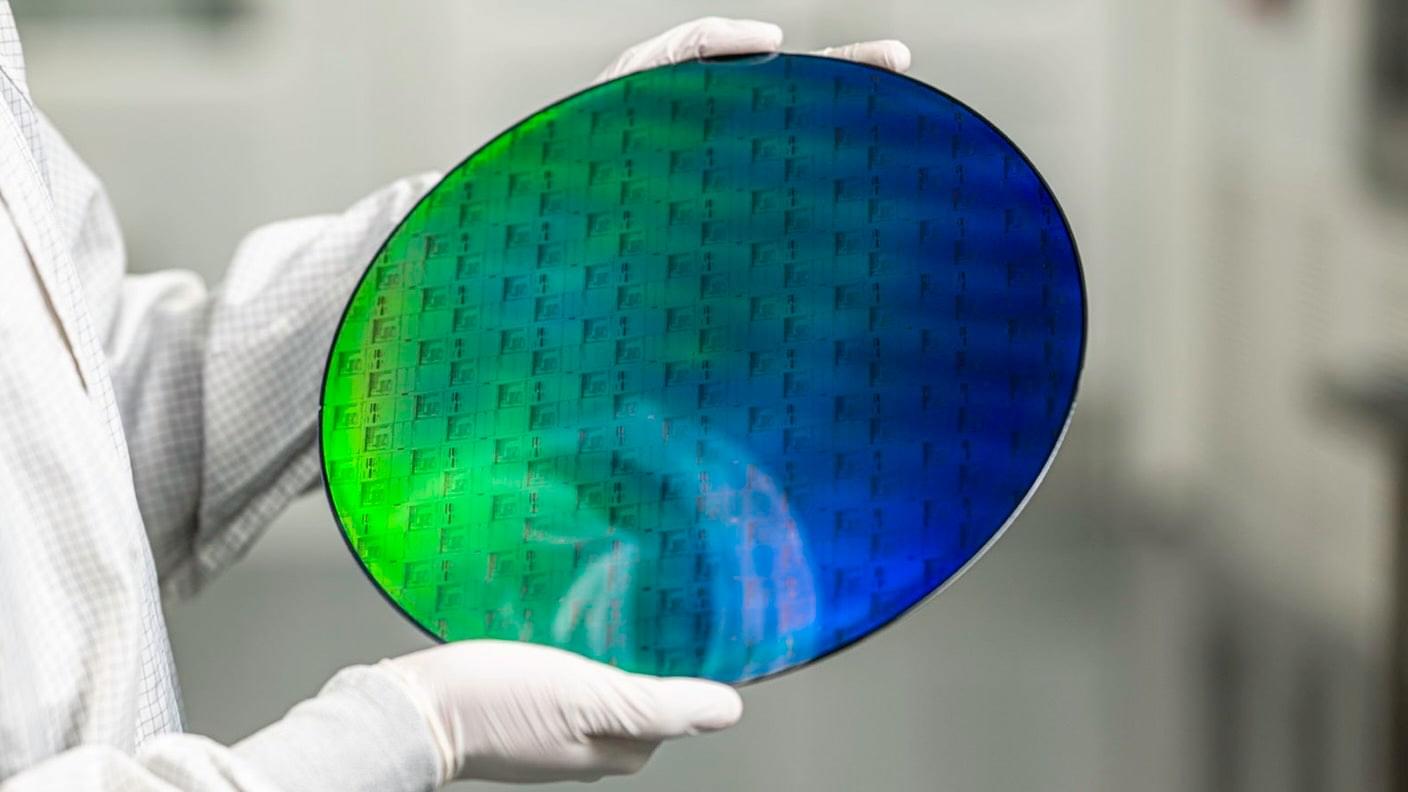The U.S. DARPA has launched the USX-1 Defiant, a 240-metric-ton unmanned surface vessel (USV) designed for fully autonomous naval missions.
“This indicates that ergothioneine influences the metabolism in a similar way to performance-enhancing agents,” Filipović said. He plans to carry out a study involving healthy human volunteers to evaluate whether the compound can similarly enhance performance in people.
By offering a clearer perspective on how ergothioneine improves muscle health, stress resilience, and cellular defenses, this research sets the stage for new strategies aimed at maintaining good health into advanced age.
As further investigations confirm these findings in humans, the mushroom compound ergothioneine may emerge as a valuable resource for countering age-related diseases and promoting a more robust, active life.
Researchers develop nanoscale 3D printing method to create biodegradable vaccine carriers with controlled release.
American quantum computing startup PsiQuantum announced last week that it has cracked a significant puzzle on the road to making the technology useful: manufacturing quantum chips in large quantities.
PsiQuantum burst out of stealth mode in 2021 with a blockbuster funding announcement. It followed up with two more last year.
The company uses so-called “photonic” quantum computing, which has long been dismissed as impractical.
“Our woolly mouse project drove innovations in areas combining the end to end process from our computational biology analysis tools to our multiplex precision genome engineering technologies,” Lamm told us. “These technologies enable precise and efficient genetic modifications at multiple sites within the genome at the same time, which could help with research focused on addressing the complex multi-genetic age-related diseases in the future.”
By further refining the genetic engineering techniques developed by Colossal, researchers may eventually develop therapies tailored to an individual’s genetic makeup, mitigating the effects of aging at a cellular level.
“Many diseases are multigenic in nature and require deep analysis computationally and being able to edit the genome at multiple sites with high degrees of efficiency to not cause off-target effects,” Lamm told us. “Our end to end process and the further development of our multiplex editing and DNA synthesis capabilities will lead to others being able to use our tools and system to treat these more complicated diseases. Together, these innovations are part of the science focused on developing personalized, targeted therapies to mitigate the effects of aging, accelerate the development of regenerative medicine, and extend both lifespan and healthspan.”
Description: We are the targets for numerous information campaigns, as companies, politicians, cybercriminals, and nation states guzzle up the digital dust of our online selves. These information campaigns are designed to trigger our survival instincts in order to prevent us from thinking, and instead trigger an emotional reaction. Dr. Schwartz will discuss this rivalry for power, and how we must first learn how to calm our survival brain in order to defend our cognitive terrain against the onslaught of information warfare.
Speaker Bio: Dr. Tamara Schwartz, USAF (ret.), is an Associate Professor of Cybersecurity and Strategy at the York College of Pennsylvania, and an affiliate researcher with Cybersecurity at MIT-Sloan Interdisciplinary Consortium for Improving Critical Infrastructure Cybersecurity, an international cybersecurity think tank. While on active duty, Dr. Schwartz’s thought leadership informed the standup of Cyber Command and the design of various command centers supporting Joint Space, Cyber, and Global Strategic Operations, and her work at the U.S. Embassy in Amman, Jordan earned her the 2011 Information Operations Officer of the Year. More recently, Dr. Schwartz was a member of the 2020 “Dr. Evil task force,” with the Defense Threat Reduction Agency, identifying future threats to inform DoD investments in emerging technology. She received her B.S. in Industrial Engineering from Rensselaer Polytechnic Institute, her M.S. in Engineering Management from the University of Dayton, and her Doctorate of Business Administration from the Fox School of Business, Temple University. Her research expertise includes Artificial Intelligence, cybersecurity as a strategic competitive advantage, and information warfare.
Information Warfare, by Dr. Tamara Schwartz.
https://he.kendallhunt.com/product/in… College of Pennsylvania, Cybersecurity Management https://www.ycp.edu/academics/program… Weapons of Mass Disruption https://podcasts.apple.com/us/podcast…
Check out my introduction to quantum mechanics course on Brilliant! First 30 days are free and 20% off the annual premium subscription when you use our link ➜ https://brilliant.org/sabine.
Two weeks ago, Microsoft made a big splash in the media by claiming that they’d found a way to build a scalable quantum computing platform which could reach one million qubits in a short period of time. They claimed this was possible with the help of a type of topological qubit called Majorana states. But it appears there are several… issues with the company’s published research. I have a quick summary.
The video with the comments from Sergey and Vincent is a one hour long discussion which you can watch in full here: • Majorana Fireside Chat: HOW CLOSE ARE…
🤓 Check out my new quiz app ➜ http://quizwithit.com/
💌 Support me on Donorbox ➜ https://donorbox.org/swtg.
📝 Transcripts and written news on Substack ➜ https://sciencewtg.substack.com/
👉 Transcript with links to references on Patreon ➜ / sabine.
📩 Free weekly science newsletter ➜ https://sabinehossenfelder.com/newsle…
👂 Audio only podcast ➜ https://open.spotify.com/show/0MkNfXl…
🔗 Join this channel to get access to perks ➜
/ @sabinehossenfelder.
🖼️ On instagram ➜ / sciencewtg.
#science #sciencenews #tech #quantum
What if humanity no longer controlled technology—but worshipped it? MACHINE CULTS takes you into a chilling, AI-generated vision of the future where humans submit to biomechanical deities, merging flesh with metal in absolute devotion.
🔹 In this dystopian world, AI reigns supreme, and organic life is obsolete.
🔹 Those who resist the machine cults face persecution, their refusal to merge seen as heresy.
🔹 Cities become cathedrals of circuitry, where cybernetic priests enforce the will of the machine gods.
This video was created using:
🚀 Midjourney V6.1 for stunning cybernetic landscapes.
🤖 Hailuo AI for smooth, dystopian animations.
🎵 Suno AI v4 for an eerie, immersive soundtrack.
🎧 Best experienced with headphones!
Do you fear or embrace a future ruled by AI? Let me know your thoughts in the comments!
🔔 SUBSCRIBE for more AI-Generated Sci-Fi content every day!
In the annals of scientific inquiry, few endeavors have been as audacious as the attempt to bridge the chasm between the tangible and the intangible, the empirical and the experiential. The declassification of the 1983 U.S. Army Intelligence report, “Analysis and Assessment of The Gateway Process,” offers a compelling case study in this regard. Authored by Lieutenant Colonel Wayne M. McDonnell, the report delves into altered states of consciousness, suggesting that human consciousness may transcend the physical plane, potentially supporting concepts akin to reincarnation. This proposition invites us to explore the intersection of infodynamics — the study of information dynamics within physical systems — and phenomena traditionally deemed spiritual, under the premise that all such phenomena are rooted in the natural order.
At the heart of this exploration lies the principle that information, much like energy, is conserved within the universe. This concept is reminiscent of the first law of thermodynamics, which asserts that energy cannot be created or destroyed, only transformed. In the realm of information theory, this translates to the idea that information persists, undergoing transformations but never facing annihilation. This perspective aligns with the notion that consciousness, as a form of information, may continue beyond the cessation of its current physical embodiment.
Quantum mechanics further enriches this discourse. The phenomenon of quantum entanglement, wherein particles become interconnected in such a way that the state of one instantaneously influences the state of another, regardless of the spatial separation, challenges our classical understanding of locality and separability. This non-locality suggests a deeply interconnected fabric of reality, where information is not confined to a singular point in space or time. Such a framework provides a plausible basis for understanding how consciousness, as an informational construct, could transcend individual physical forms, offering a naturalistic foundation for phenomena like reincarnation.
Interview with Nick Bostrom on Deep Utopia.
I made this video as a fellow of the Cosmos Institute, a 501c3 academy for philosopher-builders.
Read the Cosmos Institute Substack ► https://bit.ly/3XK5T7k.
Follow Cosmos’ founder and my friend Brendan McCord on X ► https://bit.ly/3Y9pFLb.
You can read the full transcript here: https://www.johnathanbi.com/p/transcript-for-interview-with-…eep-utopia.
Companion Interviews:









